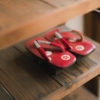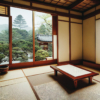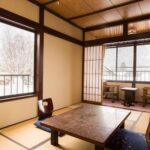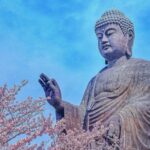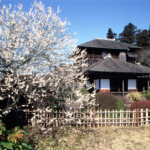What is a Ryokan? Exploring Japan’s Unique Accommodation Experience
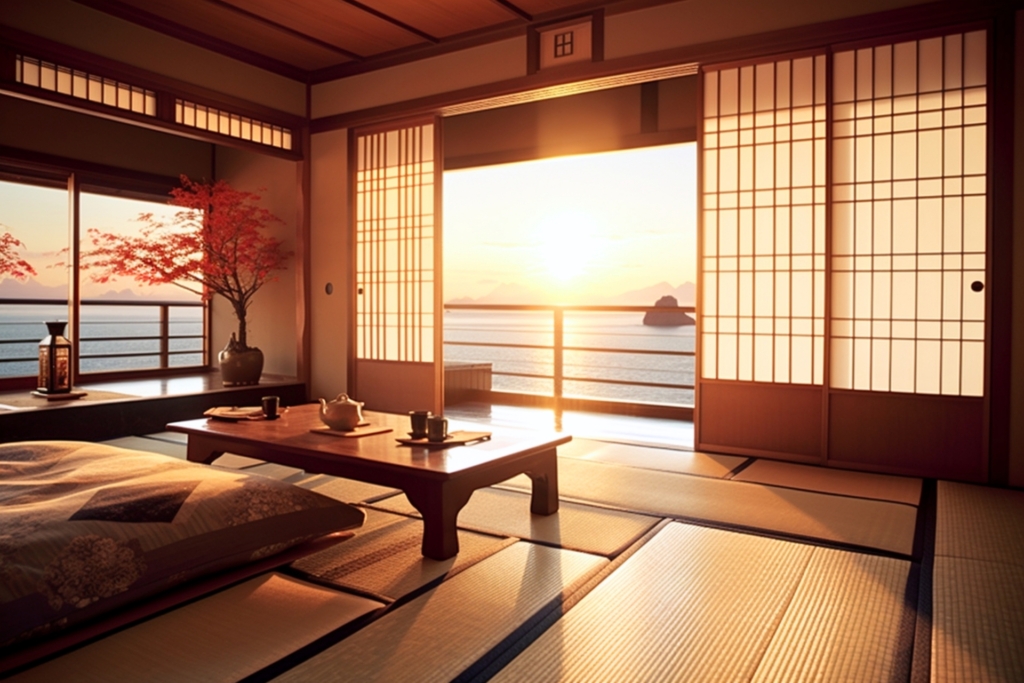
Choosing your accommodation forms a part of your travel experience. While there are many options in Japan like hotels, hostels, and guest houses, for a truly authentic Japanese experience, staying at a Ryokan(旅館) at least once is recommended.
What is a Ryokan?
A Ryokan is a type of traditional Japanese lodging.
By staying in a Ryokan, you can get a taste of Japanese culture. Traditional Japanese rooms, communal baths with soaking tubs, and seasonal Japanese cuisine are all elements of this lifestyle that you can enjoy.
Room Layout
Rooms in a Ryokan typically have tatami (畳: flooring made of straw) and guests sleep on futons (布団: Japanese-style bedding). There is a low table in the room where you can enjoy meals, have tea, and relax. Yukata(浴衣), a type of lightweight kimono, is also often provided for guests to wear as loungewear.
Food and Dining
Ryokans offer breakfast and dinner for their guests (depending the fee). The meals often feature traditional Japanese dishes (known as “washoku(和食)") made from seasonal ingredients local to the area, sometimes served in the comfort of your own room.
This can be a wonderful experience, allowing you to enjoy delicious food while appreciating the welcoming atmosphere and hospitality of the Ryokan.
Onsen (温泉: Hot Springs)
If the Ryokan is located in a hot spring area, you can enjoy large communal baths or outdoor baths. Hot springs are an integral part of Japanese culture, renowned for relaxation and health benefits.
Hospitality
Hospitality at a Ryokan is based on the spirit of “omotenashi(おもてなし)." This is a unique Japanese culture of providing the highest level of service to guests, aimed at making their stay as comfortable as possible. Ryokan staff are known for their attention to detail, ensuring guests feel at ease during their stay.
Staying at a Ryokan may be a once-in-a-lifetime experience for travelers. It provides a deep insight into Japanese tradition and culture, making your trip to Japan even more special.
Types of Ryokan
Japan is home to approximately 80,000 Ryokan, around 1,200 of which are members of the Japan Ryokan Association (www.ryokan.or.jp), ensuring a high level of service.
Japanese Ryokan come in all shapes and sizes. Their variety can be attributed to differences in location, service, amenities, cuisine, and price range.
Luxurious Ryokan offer services comparable to high-end hotels, including private hot springs and dedicated room attendants (known as 'nakai’). Meanwhile, smaller Ryokan and guesthouses offer a homely atmosphere and a taste of local life.
Here are a few types of Ryokan you might come across:
| Luxurious Ryokan (豪華旅館): | These offer top-notch service, accommodations, and cuisine. Some rooms might even feature private open-air baths. Though they tend to be pricier, they’re perfect for those seeking an indulgent experience. |
| Onsen Ryokan(温泉旅館) : | Located in hot spring areas, these are typically surrounded by abundant nature. Their highlights include open-air baths built with natural rocks and high-quality hot springs. They also offer traditional Japanese cuisine made with local ingredients. |
| Kaiseki Ryokan (懐石旅館): | Here, the focus is on exquisite cuisine (though rest assured, you can enjoy delicious meals at ordinary Ryokan too). |
| Station-front or Business Ryokan (駅前旅館、ビジネス旅館): | Often located in urban areas or near stations, these Ryokan cater to business travelers and school trips. While the facilities tend to be simple, they provide comfortable accommodation. |
| Minshuku (民宿): | Typically family-run, these small-scale accommodations offer local experiences. With simple amenities, they give off a homestay-like atmosphere. They’re relatively affordable, allowing you to interact with the local people. |
How much do Ryokan cost?
The price per adult depends on the class and location of the Ryokan, the type of room used, and the meals included, but generally, you can expect to pay between 10,000 and 30,000 yen per night. Luxury Ryokan can cost even more.
Many Ryokan operate with the assumption that more than one person will use a room, so if you want to stay alone, it might be pricier. In the past, single travelers were often turned away, but with the recent popularity of solo travel, many Ryokan have started partnering with travel agencies to offer package plans for single travelers.
Looking for a more budget-friendly Ryokan?
Then 'Station-front or Business Ryokan(駅前旅館、ビジネス旅館)’ could be the perfect fit for you. These relatively inexpensive accommodations are frequently located near train stations or in urban areas, making them incredibly convenient for travelers.
These establishments are smaller than the typical Ryokan and offer more basic services. The rooms are often Japanese-style and can be used by a single person.
'Minshuku(民宿)’, or guesthouses, are family-run accommodations housed in buildings that resemble ordinary homes. Picture a personally run B&B, and you’re on the right track. Facilities at a Minshuku can vary widely, and many provide a warm, homely atmosphere.
Booking and Check-In
You can book your stay at a Ryokan via online reservation sites or by making a direct phone call. Many Ryokan are prepared to handle inquiries in English, but smaller establishments may require you to communicate in Japanese. Check-in times can vary but are typically between 3 pm and 6 pm.
Things to Keep in Mind
While Ryokan are wonderful places to experience Japanese culture, it’s crucial to understand and respect certain manners and etiquette. For instance, it’s customary to remove your shoes when entering a tatami room and to wash your body before getting into the communal bath.
Also, guests at Ryokan are expected to be quiet during the night, so remember to be considerate of others.
If you want to immerse yourself in the fantastic aspects of Japanese culture, we highly recommend staying at a Ryokan at least once. It could very well turn out to be one of the most memorable parts of your trip to Japan. It would indeed be a shame to return to your country without experiencing these unique Japanese traditions.
